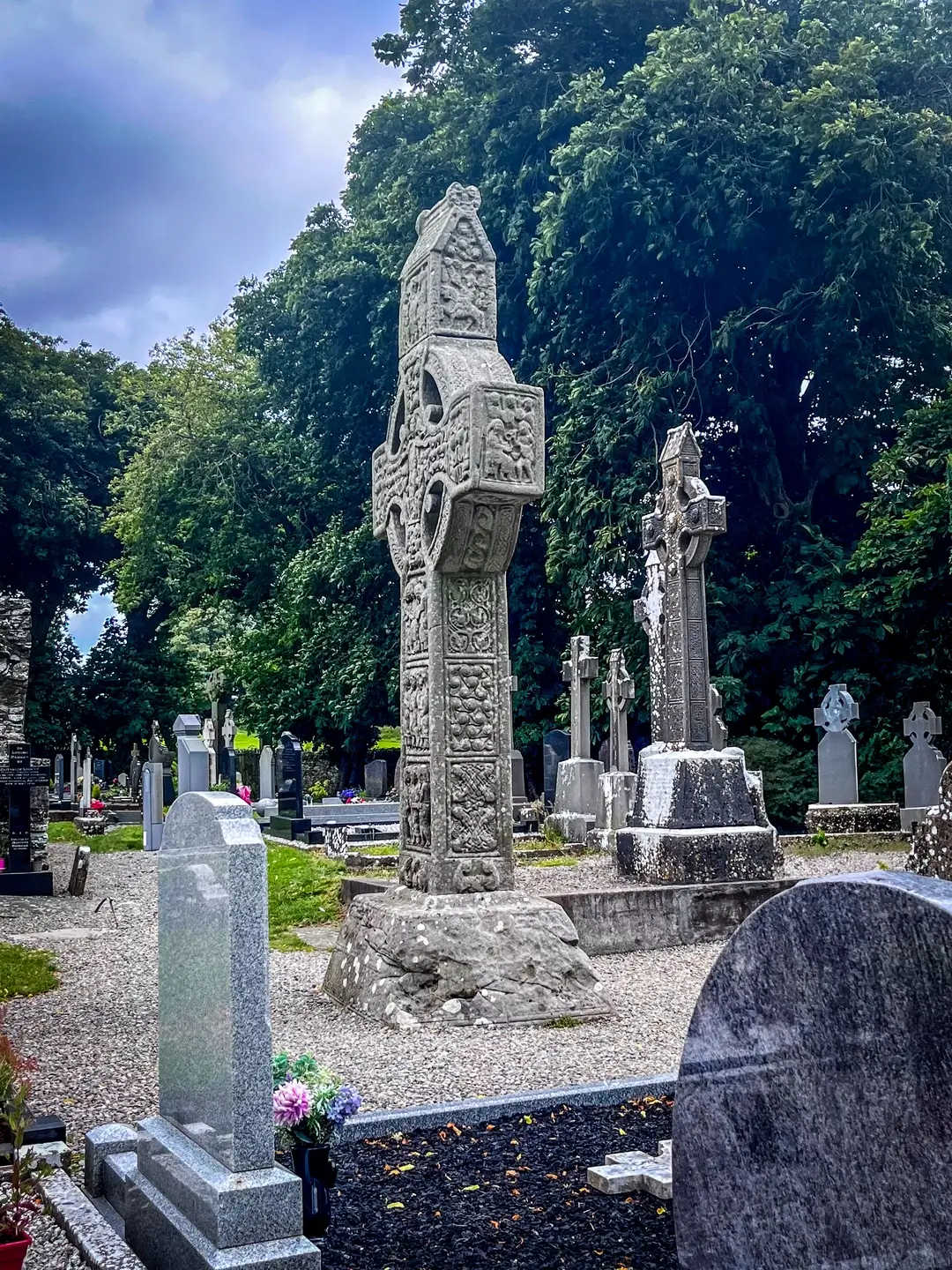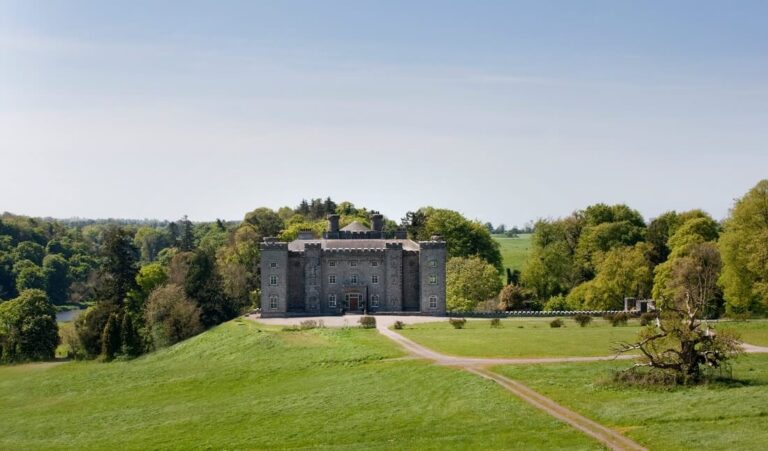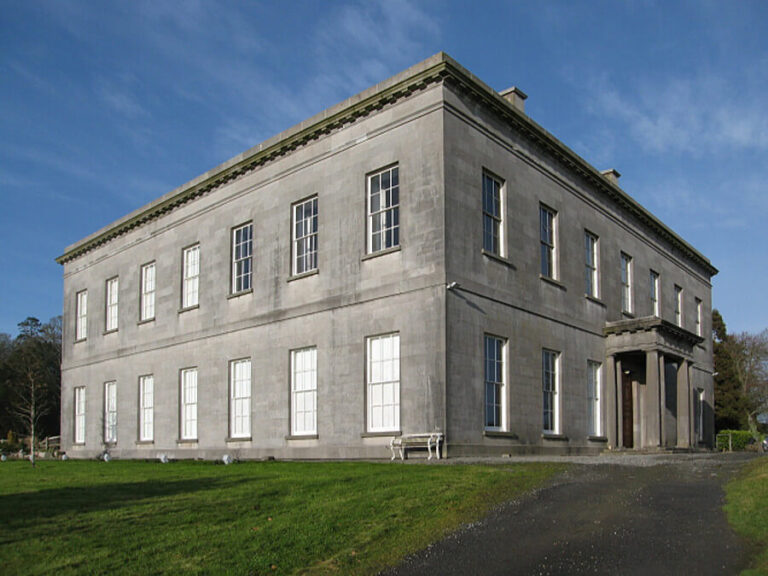Monasterboice High Crosses and Monastic Site
Monasterboice, a historic site in County Louth, Ireland, holds a special place in the country’s past. It’s known for its ancient ruins, especially its amazing high crosses and a tall round tower. This place wasn’t just a random settlement; it played a significant monasterboice religious role, shaping the spiritual and intellectual landscape of early Ireland. Let’s take a closer look at what makes Monasterboice so important.
Key Takeaways
- Monasterboice started as a monastic site in the late 400s, founded by Saint Buithe, and quickly grew into a major religious hub.
- The site is often mentioned in old Irish records from the 700s to the 1100s, showing its importance during that time.
- Its influence as a main monastic center faded after the 1100s, partly due to new church structures like Mellifont Abbey.
- Monasterboice is famous for its well-kept old buildings, including a large round tower and detailed high crosses, which are still there today.
- Even though it stopped being a big monastic center, Monasterboice stayed a place for religious visits, and its graveyard is still in use.
Origins of Monasterboice Monastic Site
Founding by Saint Buithe
Monasterboice has a pretty cool origin story. It all started way back in the late 5th century when Saint Buithe decided to set up shop. Saint Buithe, also known as Buite, was a pretty big deal in Irish religious history. He picked this spot, and it grew into a major center for faith and learning. He was born in the 6th century and passed away around 521 AD. It’s wild to think about how one person’s vision shaped the whole area. You can still feel the history when you visit. It’s amazing to think about how long ago this all began and the impact one person had on shaping the history of this place.
Meaning of the Name Monasterboice
Ever stopped to wonder where the name “Monasterboice” actually comes from? Well, it’s a version of the Irish name Mainistir Bhuithe. If you translate that, it means “monastery of Buithe.” So, right there in the name, you know who started the place! Back in the day, you might have seen it written as “Monasterboye” or even “Monasterboyse.” “Boice” is how they took the Latin name Boecius and used it for the Irish name Buithe. It’s interesting how names change over time and carry a bit of history with them. If you are interested in seeing more of the area, you can book a Boyne Valley tour.
Early Monastic Flourishing
After Saint Buithe founded it, Monasterboice really took off. The monastery got bigger and more important. From the 8th to the 12th centuries, it pops up a lot in the Irish Annals, which are like old-school historical records. It became a hub for faith, learning, and community life. Can you imagine all the scholars, monks, and craftsmen living and working there? It must have been a pretty lively place. It’s considered one of the top early Christian sites.
Monasterboice wasn’t just a religious spot; it was also a center for culture and knowledge. The monks probably made fancy illuminated manuscripts and were involved in teaching and keeping important texts safe. This made Monasterboice a key part of the intellectual scene in early medieval Ireland.
Here’s a quick look at some key aspects of its early growth:
- Good location near trade routes
- Strong leaders as abbots
- Support from local leaders
Monasterboice as a Historical Site
Center of Faith and Learning
Monasterboice was more than just a place of worship; it was a real center of activity. Think of it as a hub where faith, education, and community all came together. You can almost picture the monks carefully copying manuscripts, the sounds of chanting filling the air, and locals gathering for important events. It was a vital part of life in early medieval Ireland. The round tower might have even been used as a safe place to store important books. It’s easy to imagine the settlement in its prime, a lively place of devotion and learning. It was also strategically located near trade routes, which helped it grow.
Early Christian Significance
Monasterboice is a really important early Christian site in Ireland. Its collection of high crosses is amazing, and the remains of the churches and round tower give us a real connection to the past. The site gives us a peek into the religious practices, artistic achievements, and everyday lives of people who lived over a thousand years ago. Walking among the ruins, you can almost feel the weight of history. It’s a place that makes you think about the past. You can even take a Luxurious Seven Day Irish Tour to see the area.
National Monument Status
Monasterboice is officially recognized as a National Monument. This means it’s considered important enough to be protected and preserved for future generations. Being a National Monument helps ensure that the site gets the attention and resources it needs to stay in good condition. It also helps raise awareness about the site’s historical and cultural importance. The status acknowledges the site’s significance and helps to protect its relics associated with St. Buithe.
Monasterboice in the Annals
References in Irish Annals
Okay, so Monasterboice makes appearances in the old Irish records, known as the Annals. It’s not just a one-off mention either. These references pop up from the 8th century all the way through the 12th century. That’s a pretty long time, and it suggests the place held some importance back then. It’s like seeing a recurring character in a TV show – they’re there for a reason. These references give us a glimpse into what was happening at the monastery and in the surrounding area during those times. It’s like piecing together a puzzle, one entry at a time. You can find mentions of events, people, and maybe even some juicy gossip if you dig deep enough. It’s all about connecting the dots and figuring out the story of Monasterboice through the eyes of the people who lived back then. The Irish Annals are a treasure trove of information.
Historical Records of Importance
Monasterboice really seemed to hit its stride between the 8th and 12th centuries. This was its golden age, so to speak. It wasn’t just existing; it was thriving. Think of it like a small town that suddenly becomes a bustling city. There was probably a lot going on – building, crafting, learning, and all sorts of religious activity. The Annals give us some insight into this period, although they don’t always paint a complete picture. We can infer a few things:
- Increased building activity, like new churches or expansions.
- Mentions of important abbots or religious figures associated with the monastery.
- Possible conflicts or interactions with neighboring groups.
It’s important to remember that the Annals are not always objective. They were often written from a particular point of view, so we need to take them with a grain of salt. Still, they provide valuable clues about the history of Monasterboice.
Decline in Significance
After the 12th century, the mentions of Monasterboice in the Annals become less frequent. This doesn’t necessarily mean the site was abandoned, but it does suggest a decline in its regional importance. Several factors could have contributed to this:
- The rise of other monastic centers that overshadowed Monasterboice.
- Changes in political power that affected the monastery’s patronage.
- Viking raids and other disturbances that disrupted monastic life.
While Monasterboice may have lost some of its earlier prominence, it continued to be a place of religious significance for centuries to come. You can still book a Boyne Valley tour to see the area.
Architectural Features and Artistry
Monasterboice isn’t just old; it’s got some seriously impressive stuff still standing. The high crosses and the round tower are the big draws, showing off some amazing craftsmanship from way back when. It’s wild to think about the skills these early artisans had.
The High Crosses of Monasterboice Louth
The high crosses are probably the most famous thing about Monasterboice. These aren’t your average crosses; they’re huge, intricately carved stone monuments. The most well-known is Muiredach’s Cross, which is considered one of the best examples of its kind in Ireland. The carvings tell stories from the Bible, so they were basically like visual aids for teaching people about Christianity. It’s thought that these crosses also served as status symbols for the monastery.
- Muiredach’s Cross is about 17 feet tall.
- The crosses feature scenes from both the Old and New Testaments.
- They’re made from sandstone.
Imagine the time and effort it took to carve these crosses without modern tools. It really makes you appreciate the dedication and skill of the people who made them. They were telling stories in stone, creating lasting monuments that still speak to us today.
Monasterboice Round Tower
The round tower is another iconic feature of Monasterboice. These towers were built as places of refuge during Viking raids. The door was usually high up, so people could pull up the ladder and be safe inside. The tower at Monasterboice is missing its top, but it’s still an impressive sight. Sadly, the tower was burned down way back in 1097, and the monastery’s library was destroyed with it. You can book Boyne Valley tours to see the tower.
Preservation Challenges
Keeping these old structures in good shape is a challenge. Weather, time, and even just regular wear and tear take their toll. Conservation efforts are ongoing to protect the crosses and the tower for future generations. It’s a constant job of monitoring, repairing, and trying to slow down the effects of time. It’s important to preserve this cultural heritage for future generations.
Later History and Legacy
Continued Importance as a Pilgrimage Site
Even after its prime as a monastic center faded, Monasterboice didn’t just disappear from the map. It continued to hold significance, especially as a place of pilgrimage. People still came to see the high crosses and other religious artifacts. The site became less about monastic life and more about veneration and remembrance. Think of it as a shift from a working monastery to a sacred historical site. People likely sought blessings, paid respects to the saints associated with the site, and perhaps even looked for healing. The stories and legends surrounding Monasterboice kept it alive in the popular imagination, drawing visitors for centuries.
Modern Day Use of the Graveyard
Today, the graveyard at Monasterboice is still in use. It serves as a final resting place for members of the local community. This ongoing use connects the present to the distant past, creating a tangible link between modern life and the early Christian monks who once lived and prayed there. You can walk among the headstones and see names and dates that span generations. It’s a reminder that Monasterboice is not just a historical site; it’s a living part of the community’s story. The graveyard’s continued use also means that the site is actively maintained and cared for, helping to preserve it for future generations.
Enduring Cultural Heritage
Monasterboice’s legacy extends far beyond its physical remains. It’s a powerful symbol of Ireland’s early Christian heritage and a testament to the artistic and intellectual achievements of the monks who lived there. The site’s cultural heritage is preserved through:
- The iconic high crosses, which are recognized as masterpieces of early medieval sculpture.
- The historical records and annals that mention Monasterboice, providing valuable insights into its past.
- The ongoing efforts to conserve and protect the site for future generations.
Monasterboice stands as a reminder of the rich and complex history of Ireland. It’s a place where you can connect with the past, appreciate the beauty of early Christian art, and reflect on the enduring power of faith and learning. The site’s story continues to evolve as new discoveries are made and new generations find meaning in its ancient stones.
The story of this period is truly fascinating, showing how things changed over time and what was left behind for us to learn from. To get the full scoop and see how these events still shape our world today, make sure to visit our website.
Conclusion
So, Monasterboice, with its old stones and quiet grounds, really shows how much things can change over time. It started as a busy center for faith and learning, then slowly became less important when new places like Mellifont Abbey popped up. Even though it’s not the big deal it once was, it still holds a lot of history. The high crosses and the round tower are still there, reminding us of a long-ago time. It’s a place where you can feel the past, and it continues to be a spot for people to visit and think about what came before.
Frequently Asked Questions
Who started Monasterboice and when?
Monasterboice was founded by Saint Buithe, an important Irish saint, in the late 400s. He passed away around 521 AD.
What does the name Monasterboice mean?
The name ‘Monasterboice’ comes from the Irish words ‘Mainistir Bhuithe,’ which means ‘monastery of Buithe.’ ‘Boice’ is the English way of saying the Latin name ‘Boecius,’ which was used for Saint Buithe.
How do we know Monasterboice was important in the past?
We know Monasterboice was important because it’s mentioned many times in old Irish records from the 700s to the 1100s. This shows it was a very active and significant place during that time.
Why did Monasterboice become less significant?
The monastery became less important after new churches, like Mellifont Abbey, were built in the 1100s. These new places were part of big changes in the Irish church at that time.
What are the main things to see at Monasterboice today?
Today at Monasterboice, you can see a tall round tower, parts of old churches, and famous high crosses. These structures show how skilled the builders and artists were long ago.
Is Monasterboice still used today?
Even though the monastery itself fell into ruins by the 1600s, the graveyard there has been used continuously up to today. It’s a place where many generations of people have been buried.




